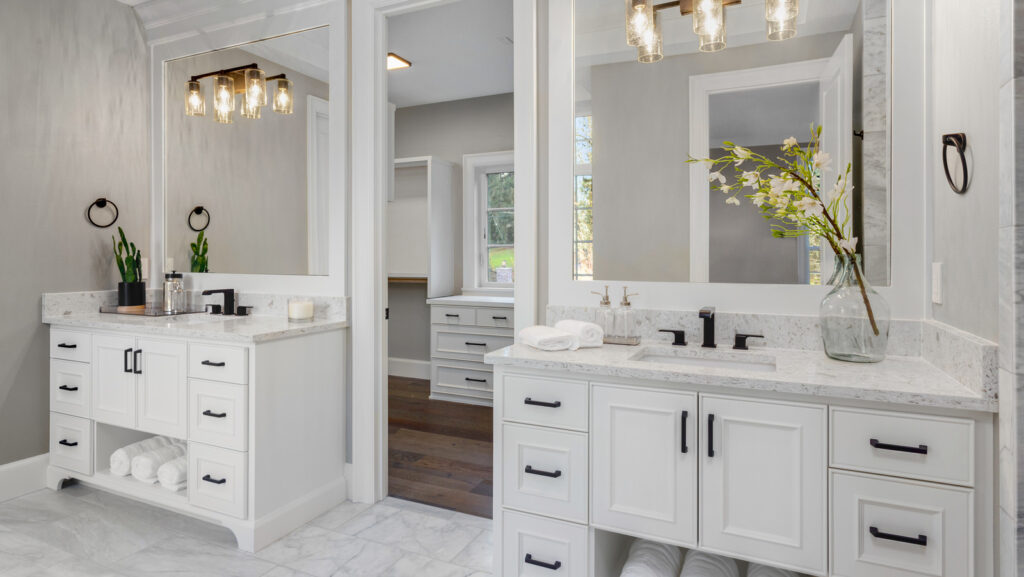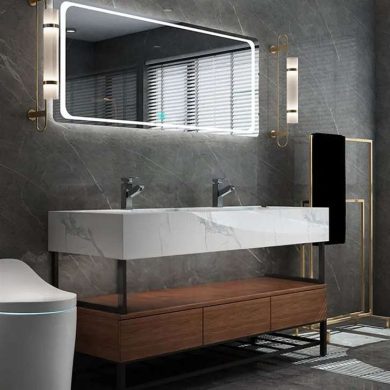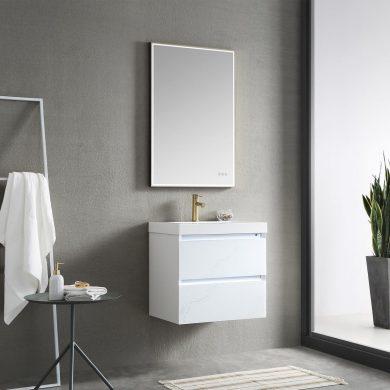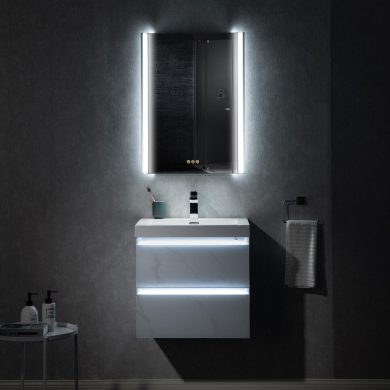A Comprehensive Guide: How to Choose the Perfect Bathroom Vanity
Are you embarking on a bathroom renovation project in the United States? One of the most crucial decisions you’ll make is choosing the right bathroom vanity. Not only does it serve as a functional centerpiece, but it also sets the tone for the entire space. With countless options available, it’s essential to consider various factors to ensure you select the perfect vanity for your needs. In this guide, we’ll explore the differences between double and single vanities and delve into the pros and cons of freestanding and floating units.
1. Understanding Double and Single Vanities:
The first decision you’ll need to make is whether to opt for a double or single vanity. Double vanities are perfect for larger bathrooms or shared spaces, providing ample storage and countertop space for couples or families. They typically feature two sinks, allowing multiple users to utilize the space simultaneously, making hectic morning routines more manageable.
On the other hand, single vanities are ideal for smaller bathrooms or powder rooms where space is limited. They typically feature a single sink and offer sufficient storage for one person’s essentials. Single vanities can still make a significant impact on the overall aesthetic of the bathroom and are available in various styles and configurations to suit your needs.

2. Exploring Freestanding and Floating Units:
Once you’ve determined the size and configuration of your vanity, it’s time to consider the installation type. Freestanding vanities are a classic choice that rests directly on the floor, providing a timeless look that suits a variety of design styles. They come in a range of materials, from wood to metal, and offer ample storage space with cabinets and drawers. Freestanding vanities are versatile and can be easily replaced or repositioned, making them a popular option for homeowners who like to change up their decor.
On the other hand, floating vanities are mounted to the wall, creating a sleek and modern aesthetic. They’re an excellent choice for small bathrooms or contemporary spaces where visual openness is desired. Floating vanities can make a room appear larger by creating the illusion of more floor space, making them a popular choice for modern urban dwellings. However, they may require professional installation to ensure proper support and stability.
Pros and Cons:
- Double Vanities:
- Pros: Ideal for shared bathrooms, ample storage and countertop space, suitable for couples or families.
- Cons: Requires more floor space, may be more expensive than single vanities.
- Single Vanities:
- Pros: Space-saving, versatile for various bathroom sizes, more affordable than double vanities.
- Cons: Limited countertop and storage space, not suitable for shared bathrooms.
- Freestanding Vanities:
- Pros: Timeless design, versatile installation options, easy to replace or reposition.
- Cons: Takes up more floor space, may not suit modern or minimalist aesthetics.
- Floating Vanities:
- Pros: Sleek and modern look, creates the illusion of more floor space, ideal for small bathrooms.
- Cons: Requires professional installation, limited storage space compared to freestanding vanities.
Conclusion:
Choosing the perfect bathroom vanity requires careful consideration of your space, style preferences, and budget. Whether you opt for a double or single vanity, freestanding or floating unit, there’s a wide range of options available to suit your needs. By weighing the pros and cons of each type and considering your specific requirements, you can select a vanity that enhances the functionality and aesthetics of your bathroom. Happy renovating!







